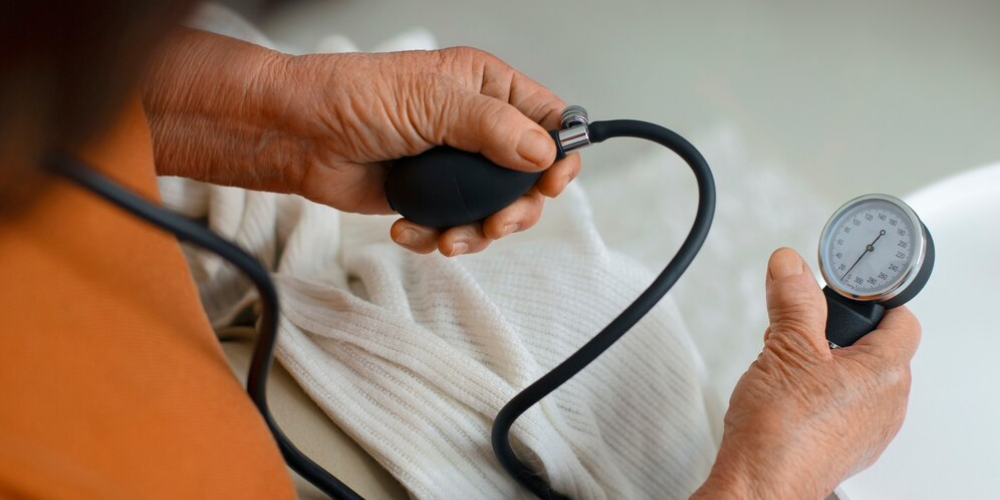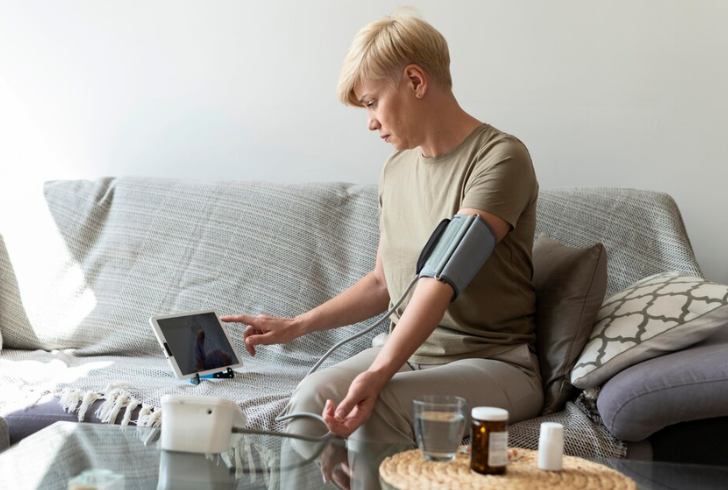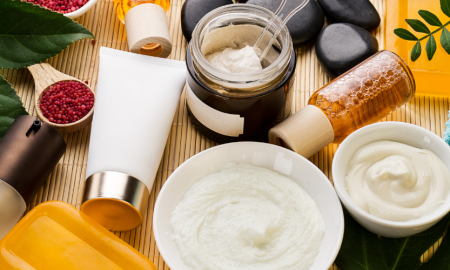
7 Common Blood Pressure Mistakes to Avoid for Accurate Readings

Managing your blood pressure is crucial for maintaining heart health, but many people unknowingly make mistakes when measuring it at home. These errors can lead to inaccurate readings, which may result in unnecessary worry or missed treatment opportunities. Understanding how to properly monitor your blood pressure is essential in order to get reliable results.
Here are seven common blood pressure mistakes that could be affecting the accuracy of your readings.
1. Incorrect Arm Positioning

Freepik | Positioning your arm matters for accurate blood pressure readings.
Believe it or not, how you position your arm when taking a blood pressure reading can affect your results. A recent study by Johns Hopkins Medicine revealed that placing your arm on your lap can cause an increase in systolic blood pressure by almost 4 mmHg.
Even worse, leaving your arm hanging at your side could inflate the reading by up to 7 mmHg. For the most accurate results, it’s crucial to keep your arm supported on a flat surface, ideally at heart level. Make sure you’re seated with your feet flat on the floor and your legs uncrossed.
2. Using the Wrong Cuff Size
If the blood pressure cuff you’re using is too big or too small, your readings won’t be accurate. It’s important to ensure the cuff fits snugly around your arm for a reliable measurement. Most monitors come with either an arm cuff or a wrist cuff, but the arm cuff tends to provide more accurate results. If you’re unsure whether your cuff is the right size, it’s worth getting it checked by a healthcare professional to make sure it’s calibrated correctly.
3. Not Allowing Enough Rest Time
Taking a blood pressure reading immediately after physical activity, eating, or drinking stimulants like caffeine can lead to inflated results. To ensure an accurate measurement, it’s essential to sit quietly for at least five minutes before checking your blood pressure. During this time, avoid distractions and try to relax. When your body is in a calm state, your blood pressure will be more reflective of its typical levels.
4. Taking One Measurement Instead of Two
Blood pressure can fluctuate throughout the day, so relying on a single reading may not give you a full picture of your cardiovascular health. It’s recommended to take two readings, waiting at least one minute between each.
By doing this, you can get a better idea of your average blood pressure. Tracking your readings over time also gives you and your healthcare provider a more accurate trend to assess whether your blood pressure is consistently high.
5. Not Monitoring Blood Pressure Regularly
One-off readings might not accurately reflect your overall blood pressure. The American Heart Association advises regularly tracking your blood pressure, ideally at the same time every day, to spot any trends or changes. Consistency helps detect potential issues early on, especially if you have a family history of hypertension.
6. Not Recording Your Results

Freepik | Monitor and track your blood pressure; logging readings aids in health management.
While it’s great to monitor your blood pressure regularly, it’s equally important to track your readings. Keeping a log of your blood pressure can help both you and your doctor understand patterns and make necessary adjustments to your health plan. Whether you use a digital app or a handwritten log, consistency in recording your results can be a valuable tool for managing your blood pressure.
7. Ignoring High Readings
It’s easy to dismiss an occasional high reading, but consistently elevated blood pressure can have serious long-term health consequences. According to Dr. Bradley Serwer, a cardiologist, ignoring consistently high blood pressure could put you at risk for heart attacks, strokes, and kidney problems.
If your readings consistently exceed 130/80 mmHg, it’s essential to consult with your healthcare provider to discuss next steps, including potential lifestyle changes or medications to control it.
Tips for Accurate Blood Pressure Readings
To get the most accurate blood pressure readings at home, keep these tips in mind:
1. Always check your blood pressure at the same time each day.
2. Rest for five minutes before taking a reading.
3. Ensure that your cuff is the right size and properly positioned.
4. Use a comfortable and quiet space to take your measurements.
5. Record your results and share them with your doctor for ongoing monitoring.
Taking an accurate blood pressure reading at home is crucial for managing your health and detecting potential issues early on. By avoiding common mistakes, you can improve the reliability of your readings. If your readings are consistently high, consult with a healthcare provider to develop an effective plan to manage your blood pressure and reduce your risk of cardiovascular disease.
More inHealthy Trends
-
`
Are Popular Diet Trends Actually Good for Your Heart?
Diet trends grab headlines every year, promising everything from glowing skin to dramatic weight loss. But when it comes to the...
July 30, 2025 -
`
Why Are Men Taller Than Women? New Genetic Study Finds Clue
For centuries, the average height difference between men and women has been noticeable—men generally stand about five inches taller. While environment...
July 23, 2025 -
`
How Upcycled Beauty Ingredients Are Reshaping the Industry’s Future
The beauty industry is going through a big shift — and it’s not just about trends. As waste problems grow and...
July 17, 2025 -
`
A Look Inside Faith Kipyegon’s Groundbreaking Mile Run in Paris
Last week in Paris, Faith Kipyegon returned to a place she knows well: Stade Sébastien Charléty. But this time, she wasn’t...
July 9, 2025 -
`
Dairy Is Making a Major Comeback — And Health Shoppers Are Loving It
Just a few years ago, dairy sat quietly in the back seat while plant-based alternatives took the spotlight. Now, it’s stepping...
July 4, 2025 -
`
Does Aging Cause Dental Problems?
Aging doesn’t automatically mean losing teeth or developing gum disease. In fact, older adults today are holding onto more of their...
June 25, 2025 -
`
How Upcycled Ingredients Are Shaping the Future of Cosmetics
What used to end up in bins or compost heaps is now finding a new life inside skincare bottles and beauty...
June 18, 2025 -
`
Rock Legend Rod Stewart Trains to Break Sprint Record at 80
Age isn’t slowing Rod Stewart down. Known worldwide for his legendary voice, stadium-filling tours, and timeless hits like “Maggie May”, the...
June 11, 2025 -
`
The Truth Behind Detox Diets – Health Boost or Risky Trend?
It’s hard to scroll through your feed without seeing someone sipping green juice with promises of instant energy, glowing skin, and...
June 3, 2025














You must be logged in to post a comment Login